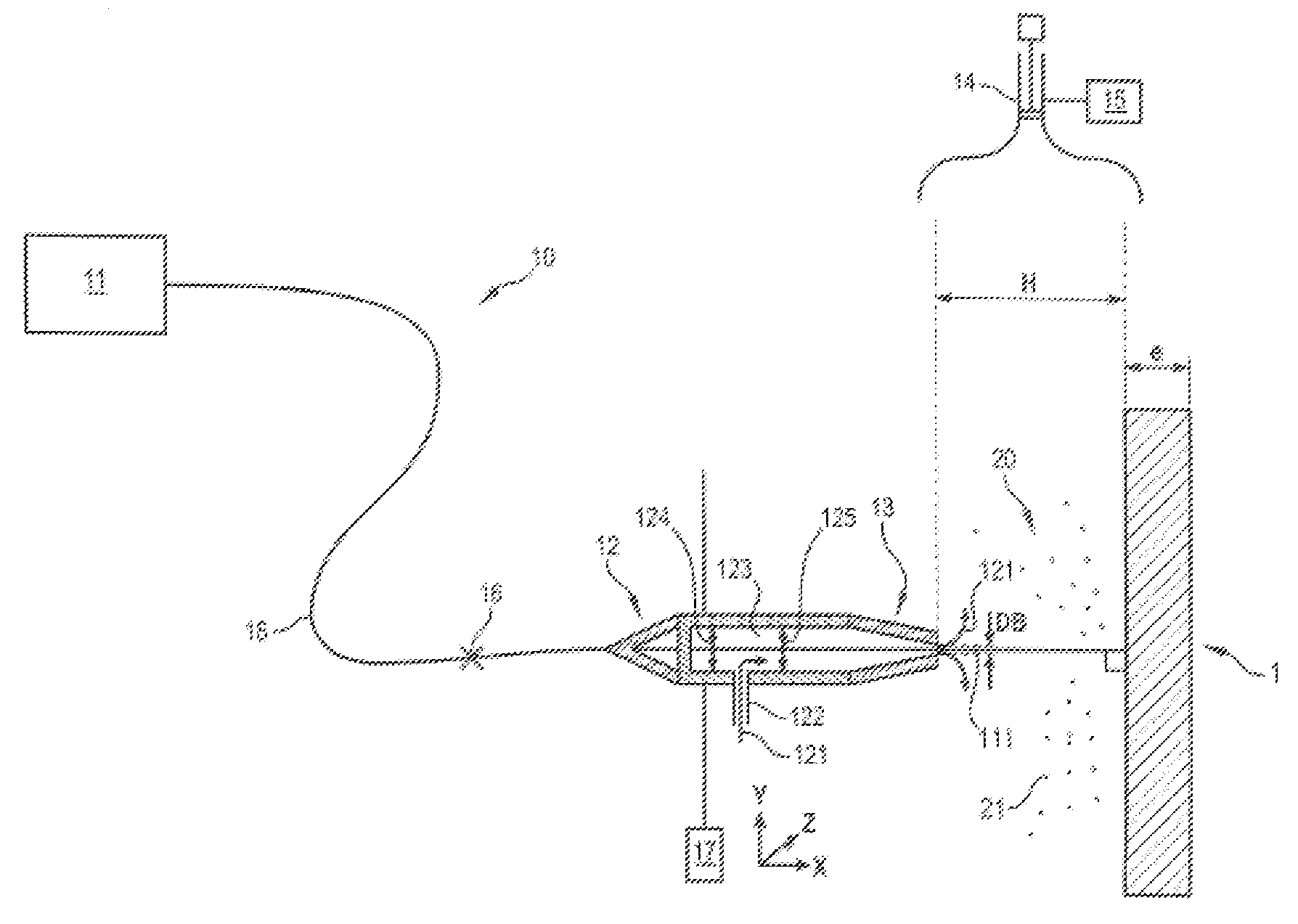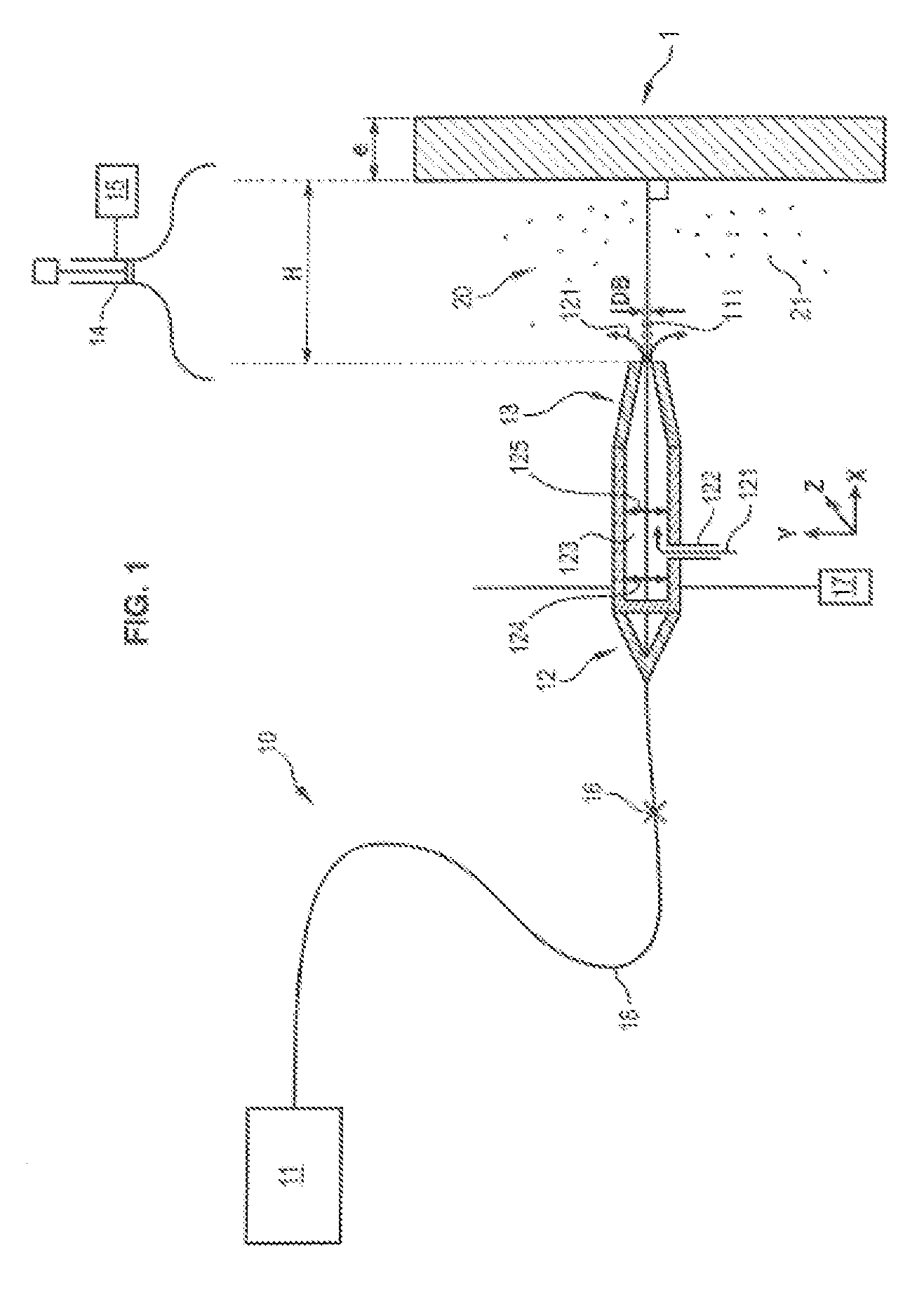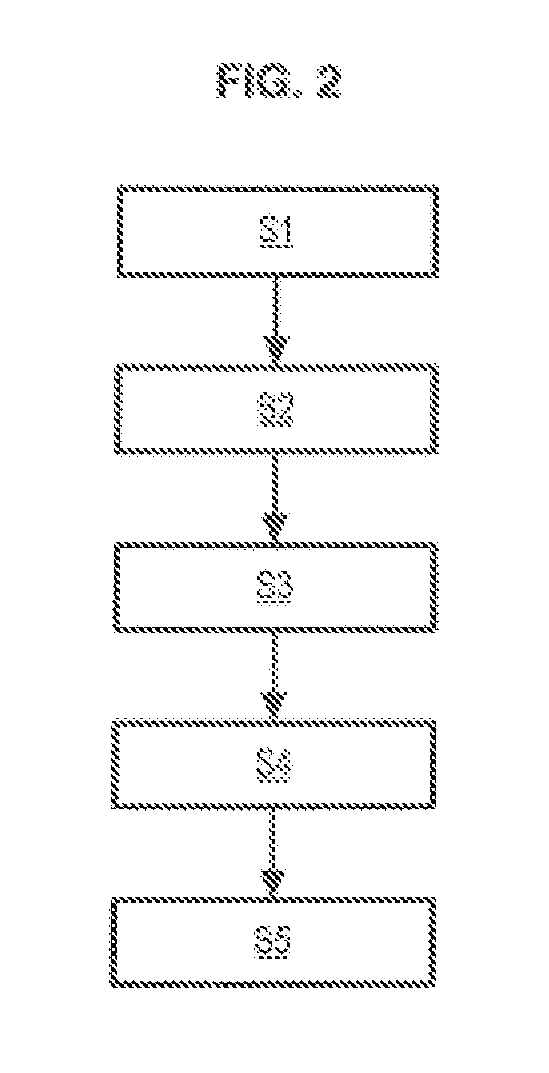Laser cutting method optimized in terms of mass defect per unit length
a laser cutting method and laser cutting technology, applied in laser beam welding apparatus, nuclear engineering, facility decommissioning, etc., can solve the problems of no laser cutting method optimized, difficult collection of slag, and even more undesirable sedimentation slag
- Summary
- Abstract
- Description
- Claims
- Application Information
AI Technical Summary
Benefits of technology
Problems solved by technology
Method used
Image
Examples
Embodiment Construction
[0015]The invention proposes overcoming at least one of these drawbacks.
[0016]To this end, according to the invention an optimized laser cutting method for cutting out a piece from a material by a cutting system is proposed and comprises[0017]a laser source for producing a laser beam having a power, and[0018]a cutting head comprising an end nozzle for the passage of the cutting laser beam,
wherein the method is characterized in that it comprises a step of determining a cutting power Pd such that:
Pd=Max(Popt;λe)
where Max is the mathematical operator of the maximum,
[0019]Popt is an optimal power of the laser beam of the cutting system, determined in accordance[0020]with the piece to be cut out, and / or[0021]with cutting parameters and / or[0022]with the type of system,
in order to minimize the mass defect per unit length of the piece during cutting of said piece,
[0023]λ is a leading coefficient representing the number of kW required for cutting out the piece per mm of piece thickness, and
[...
PUM
| Property | Measurement | Unit |
|---|---|---|
| diameters | aaaaa | aaaaa |
| diameters | aaaaa | aaaaa |
| diameter | aaaaa | aaaaa |
Abstract
Description
Claims
Application Information
 Login to View More
Login to View More - R&D
- Intellectual Property
- Life Sciences
- Materials
- Tech Scout
- Unparalleled Data Quality
- Higher Quality Content
- 60% Fewer Hallucinations
Browse by: Latest US Patents, China's latest patents, Technical Efficacy Thesaurus, Application Domain, Technology Topic, Popular Technical Reports.
© 2025 PatSnap. All rights reserved.Legal|Privacy policy|Modern Slavery Act Transparency Statement|Sitemap|About US| Contact US: help@patsnap.com



